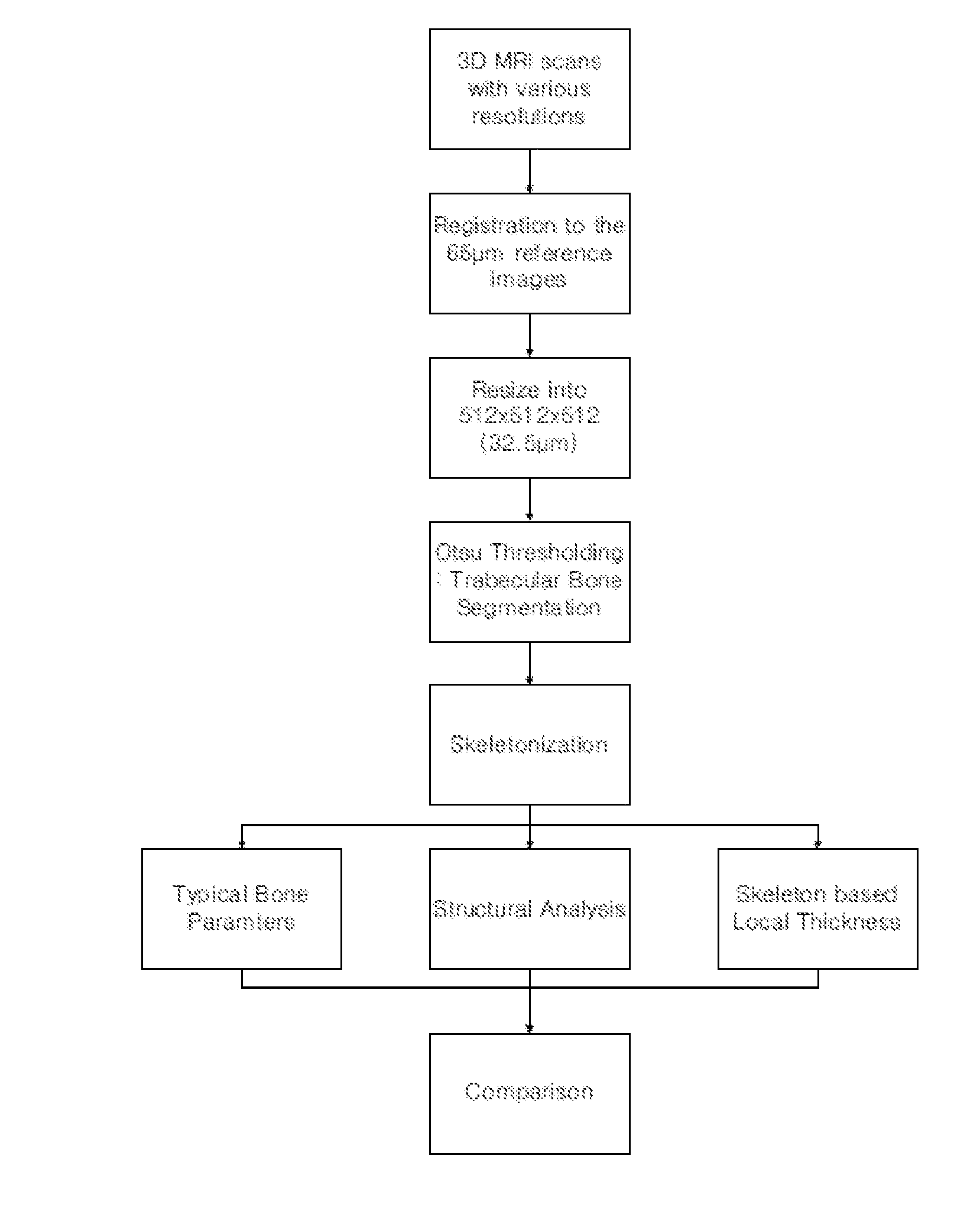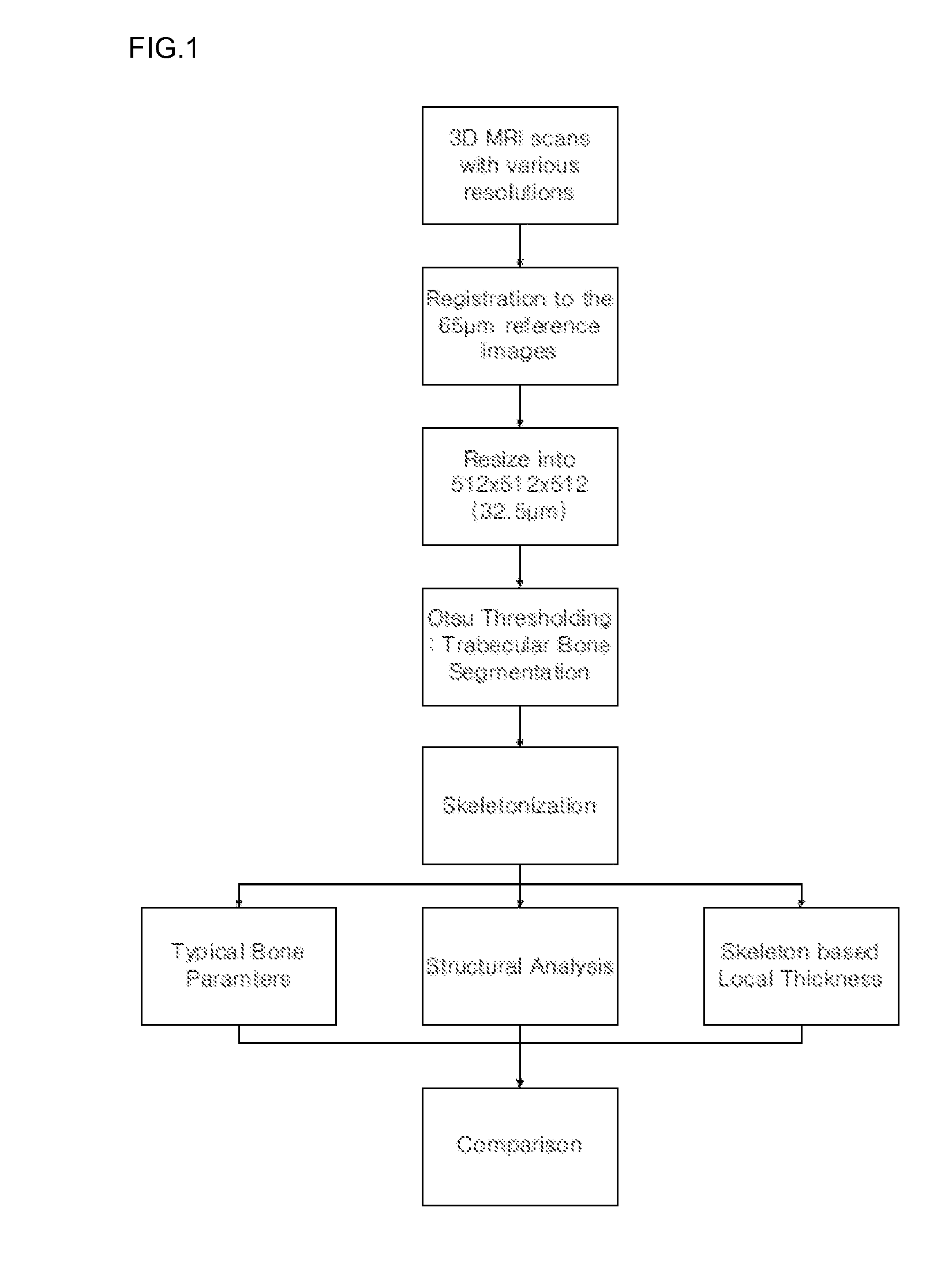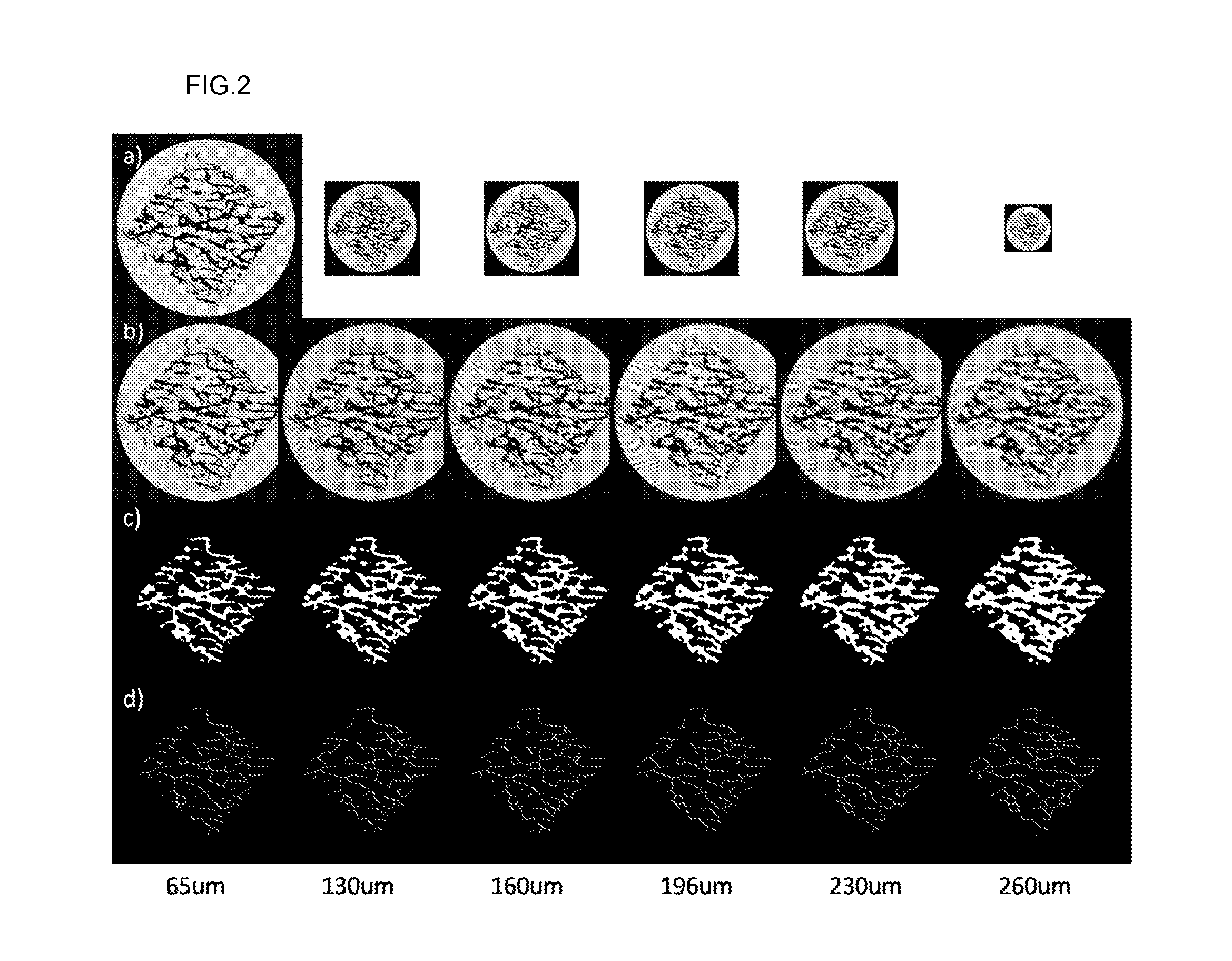Method For Measuring Trabecular Bone Parameters From MRI Images
a trabecular bone and parameter measurement technology, applied in the field of trabecular bone parameter measurement from mri images, can solve the problems of insufficient bmd diagnosis, insufficient mdct resolution, and high risk of fracture,
- Summary
- Abstract
- Description
- Claims
- Application Information
AI Technical Summary
Benefits of technology
Problems solved by technology
Method used
Image
Examples
example 1
Acquisition of Micro MR Images
[0042]Ten bone specimens were extracted from the distal femoral condyle during knee joint replacement procedures at Bundang Seoul National University Hospital.
[0043]The specimens were cut using a saw (1×1×1 cm3) and were then fixed in formal in and stored. In preparation for the scan, the bone specimens were defatted, degassed, and immersed in 0.5% (volume percent) gadopentetate-doped water. 3D iso-cubic trabecular bone images of the bone specimens were obtained using a 4.7T Bruker BioSpec MRI scanner with a 40-cm bone size. A 2.5-cm birdcage coil with quadrature detection was used. Factors which impede high resolution 3D imaging of trabecular bone include long scan times and the blurring along the trabecular bone marrow interface caused by the susceptibility difference. Therefore, a 3D fast large-angle spin-echo (FLASE) sequence with a 140° pulse (TR=100 ms and TE=10 ms) was used to overcome these two problems.
[0044]FIG. 1 shows the overall scheme of t...
example 2
Imaging Preprocessing and Trabecular Bone Segmentation
[0045]The bone specimens slightly rotated during the acquisition of the images with a 65 μm voxel size secondary to the long acquisition times and strong gradient pulses. The images acquired with larger voxel sizes did not rotate significantly. Therefore, all of the lower resolution images were registered with a high resolution reference image (65 μm cubed iso-cubic voxel size) by rigid registration based on a mean squared difference metric and cubic spline interpolation. After the registration, they were resized as 512×512×512 (iso-cubic voxel resolution: 32.5 μm) using a cubic spline interpolation algorithm. In-house software was developed for these preprocessing steps using the Insight Segmentation and Registration Toolkit (ITK). Trabecular bone extraction from images with various resolutions was performed using the Otsu thresholding method. FIGS. 2a, 2b and 2c show the original images, the re-sampled images, and the segmented...
example 3
Trabecular Bone Parameters Evaluation
[0046]To evaluate the trabecular bone parameters, skeletonization using a 3D medial surface / axis thinning algorithm was applied to detect the center line of segmented trabecular bone. Each voxel on the skeleton can be considered a structural element for bone analysis. To evaluate the trabecular bone structure, the joints and branches of the skeleton were identified. Structural bone parameters, including joint number (Joint#) and branch number (Branch#) were normalized by those of the reference images due to the large variation of joint and branch numbers between the different specimens. Therefore, normalized joint number (nJoint#), normalized branch number (nBranch#), and average branch length (avgBranchLen) were evaluated. For each voxel along the skeleton, local trabecular bone thickness was measured using a model-independent method. In addition, conventional bone parameters including trabecular thickness (TB.Th), bone density (BV / TV), trabecul...
PUM
 Login to View More
Login to View More Abstract
Description
Claims
Application Information
 Login to View More
Login to View More - R&D
- Intellectual Property
- Life Sciences
- Materials
- Tech Scout
- Unparalleled Data Quality
- Higher Quality Content
- 60% Fewer Hallucinations
Browse by: Latest US Patents, China's latest patents, Technical Efficacy Thesaurus, Application Domain, Technology Topic, Popular Technical Reports.
© 2025 PatSnap. All rights reserved.Legal|Privacy policy|Modern Slavery Act Transparency Statement|Sitemap|About US| Contact US: help@patsnap.com



